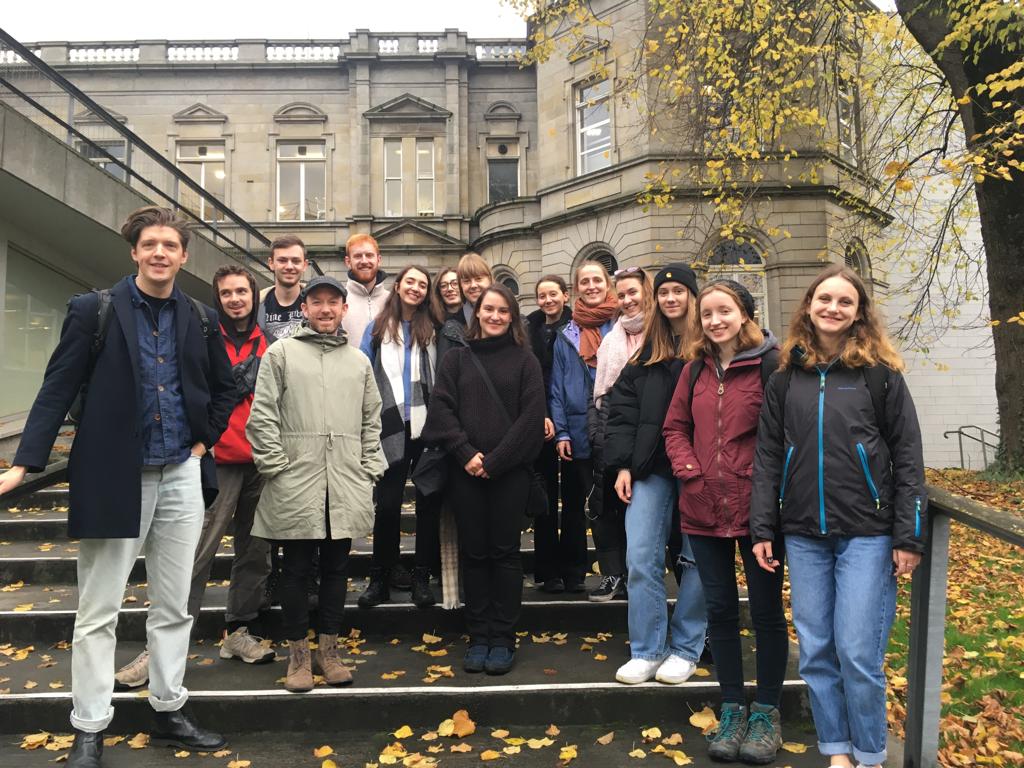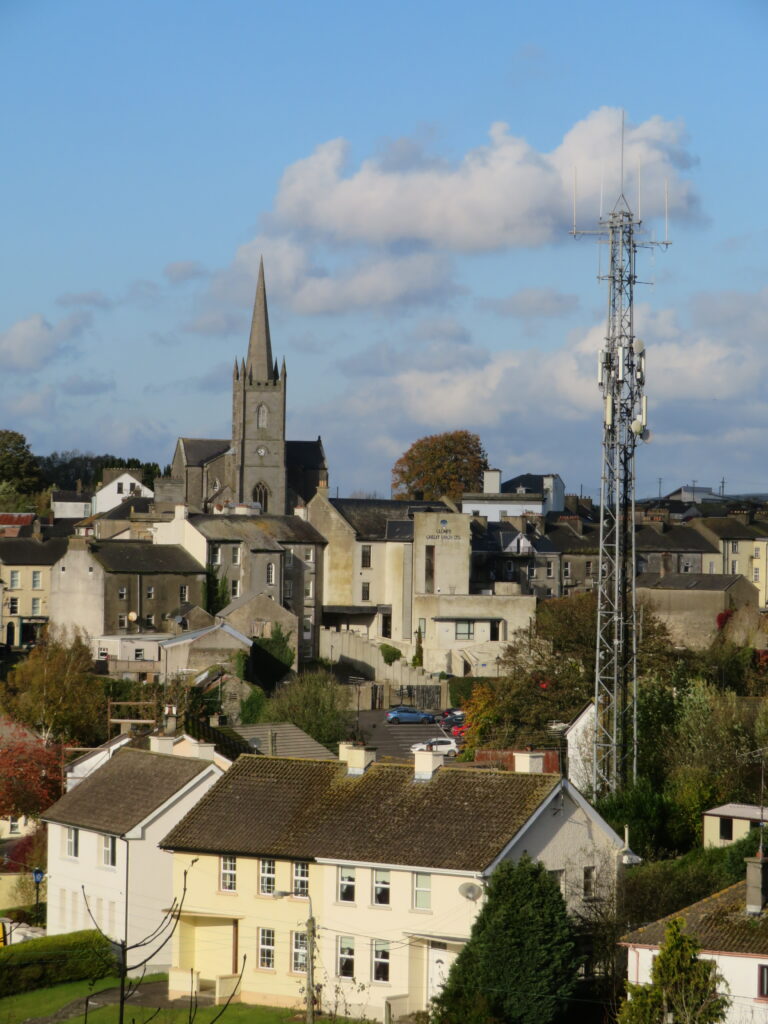Groupwork
‘Both conceptual and tangible, these ‘alternative’ arrangements’ mirror the richness, controversy and determination of a national consciousness that takes into account not only the empirical but also the empyrean.’
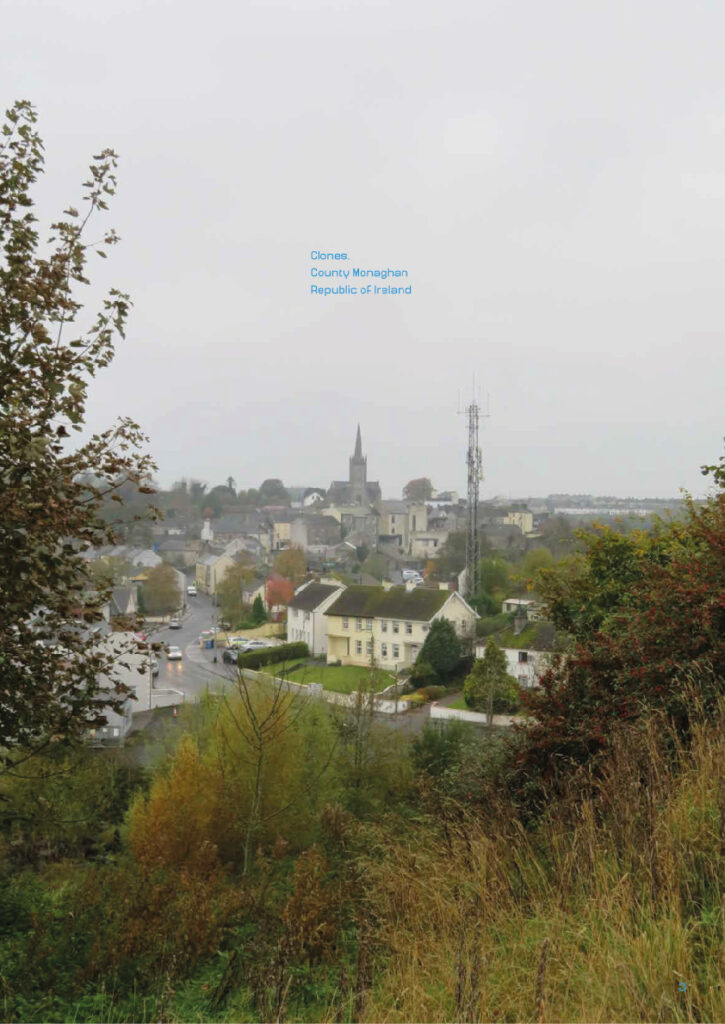
01. The Atlas
The Atlas was the beginning of our discovery of Clones, and for some of us Ireland. As an extensive compilation of Iris history, the Atlas uses the concept of a continuous time–line to guide the reader through its history, using Clones as a case study which appears periodically. Consequently, events that happened in Clones can be seen as the black pages in contrast to the white pages of the timeline.
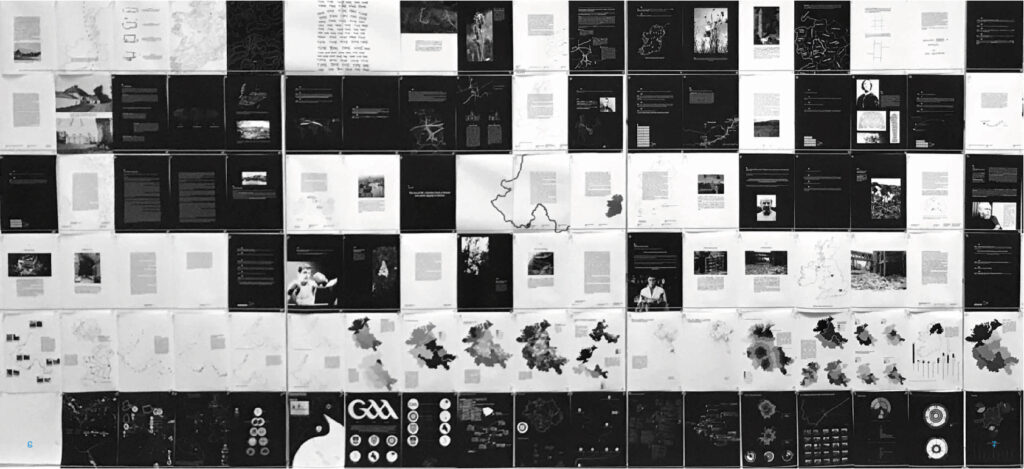
This contrast was chosen to highlight whether or not great historical moments impacted Clones and its community. Using a monochromatic palette, the atlas lets the history speak for itself. The black timeline running along the bottom of the page not only shows the extensive length and depth of Irish history, but also allows every-day event from Clones to pinch the span of history and add humour.
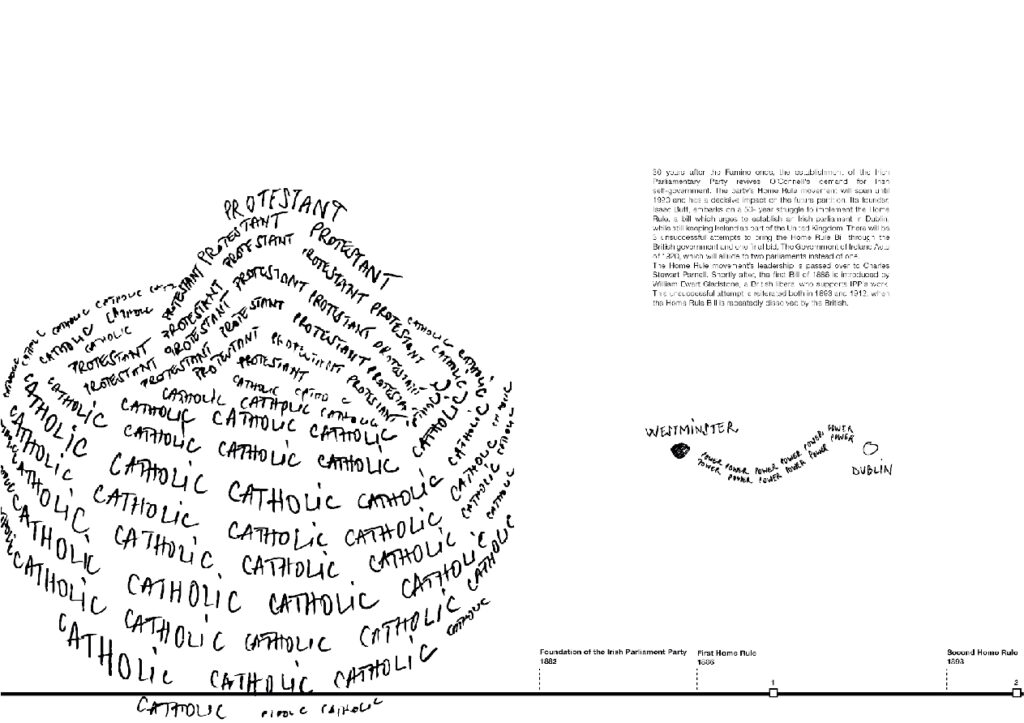
Entitled ‘ireLAND’, our atlas aimed at an objective representation of Irish history focusing on the land, which is sometimes the only objective truth within a complex and misunderstood history.
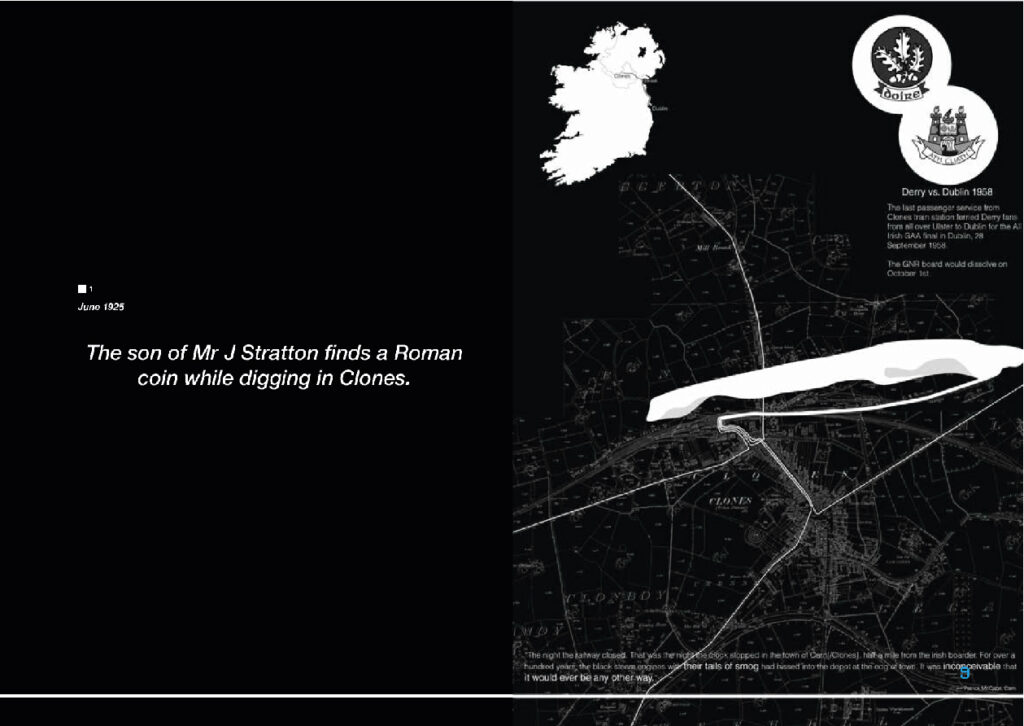
‘This is an atlas about Ireland, a portrait of land and people, history and creed, a telling of centuries, unbounded and continuously alive. Set at the far tip of western Europe, Ireland has always been a place of dispute, whose boundaries are being traced and retraced in questof power.The land became the people equally as muchas the people became the land.‘
02. The field trip
A very significant part of the early phases of the year was the field trip to Ireland. As many of our unit had never visited the island of Ireland before it was essential in opening our mindset to conditions of the places there. Before travelling to our sight in County Monaghan we visited Belfast, flying in on the 27th October 2019. While here we stayed in a hostel and visited several sites including notable examples of public architecture such as the MAC gallery, the Lyric theatre and the Ulster Museum.
We made sketches and observations on the types of buildings we would later be designing. An open topped tour bus in addition gave the group an overview of the entire town, including the remaining symbols of religious segregation such as the Peace Walls, illustrating history many of us had only read about in our research.
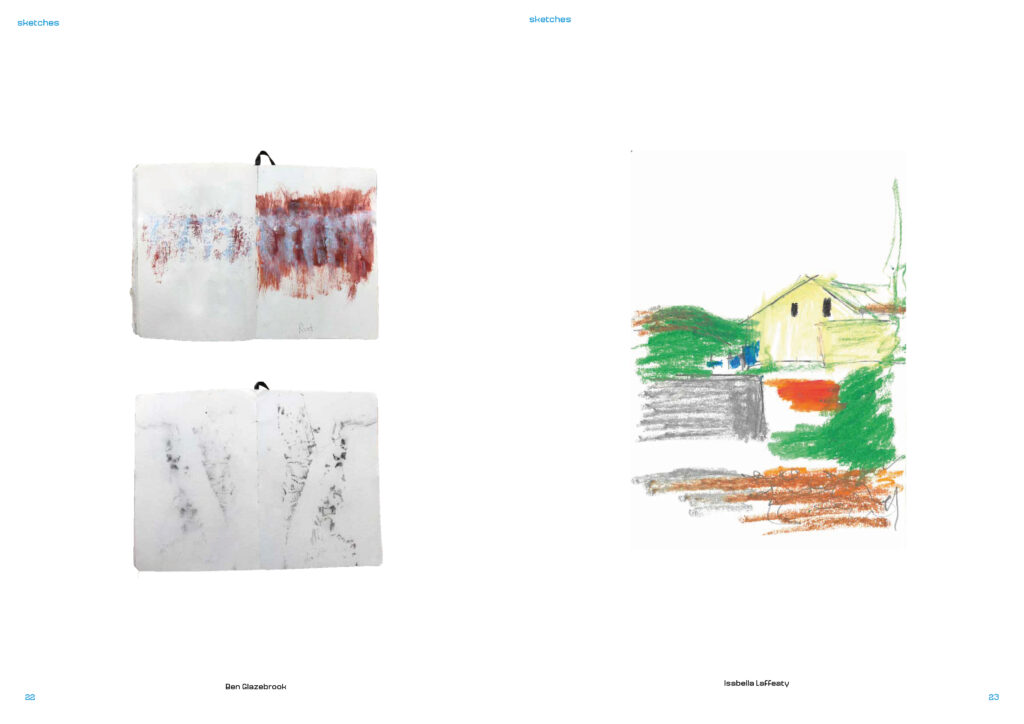
Over the course of our stay, we attempted to study the town in a condensed manner, absorbing atmospheric and social conditions in various ways. As well as this we completed several tasks outlined in the brief. These included taking five considered photographs with a focus on what they set out to describe and how they are framed. As we would not return to the site photographs would be an essential research for our design. As well as this we made a series of atmospheric drawings in a range of media to capture light, texture, materiality, space and other spatial qualities.
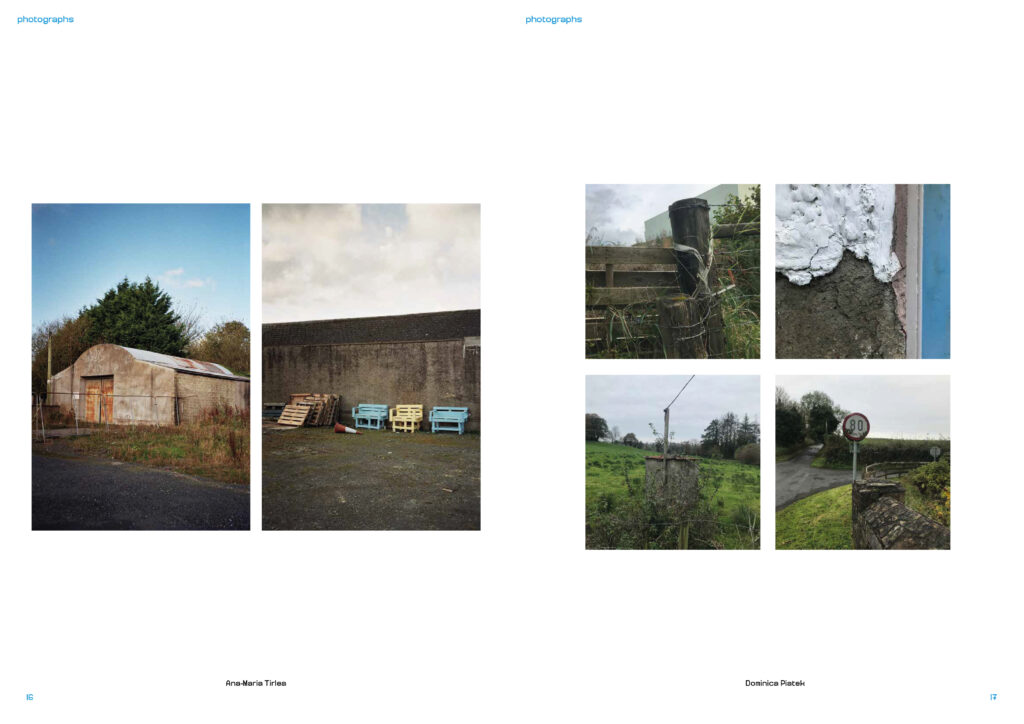
03. Group Axonometric Drawing
Returning from our study trip to Clones we began a large group drawing to provide a record of Clones and the surrounding areas. During the study trip we had to decide on the extent of area to be covered, taking into consideration specific places of interest and relevance. Each person was assigned an area to explore, photograph and record in order to gather material which we could refer back to when back in Cardiff and producing the large group drawing. This drawing would be in the form of a plan extruded vertically.
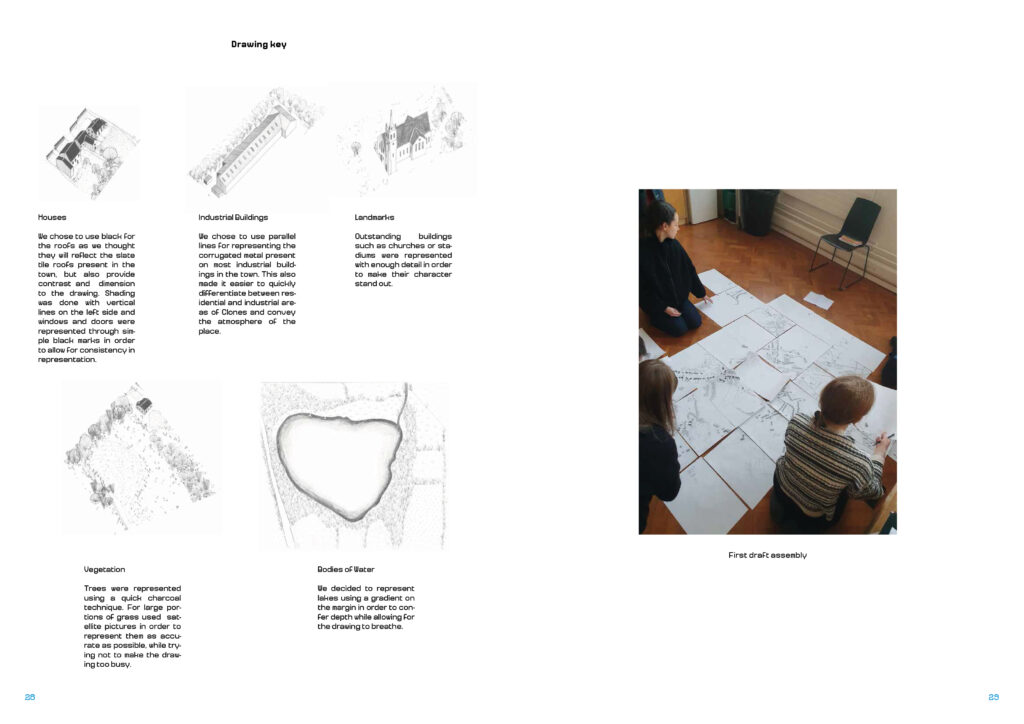
The drawing was to be made up of 49 A3 sheets to be arranged and displayed as one complete piece, allowing a high level of detail while capturing a large area of space. We had to plan out how we would position the areas to be drawn on each A3 page, and then we distributed the pages amongst ourselves.
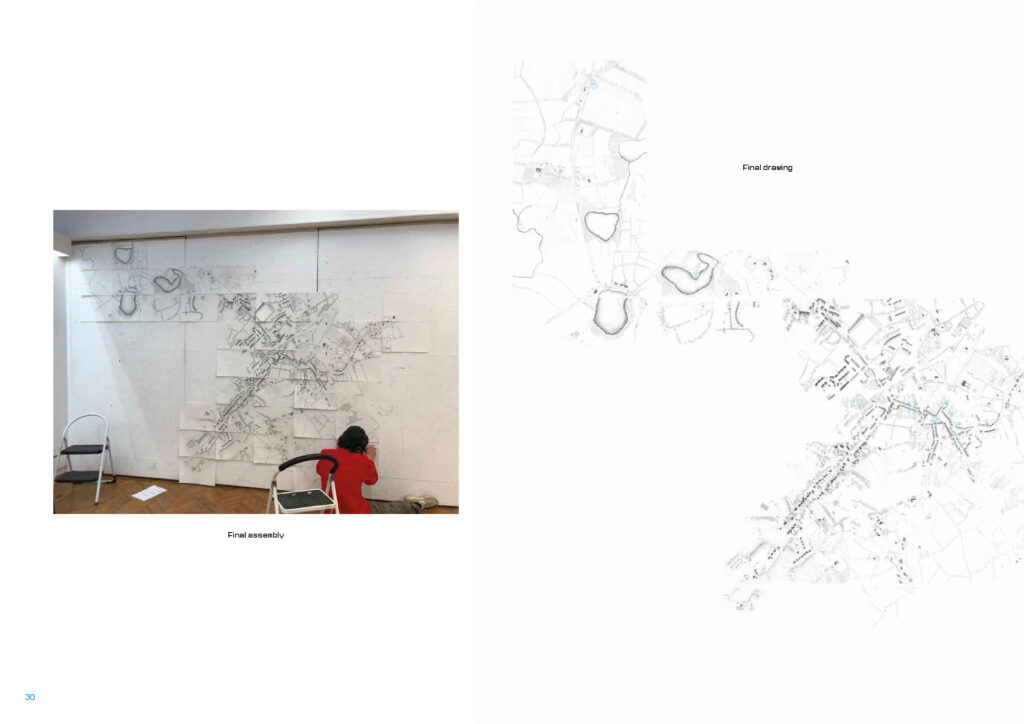
04. The Chapbooks
After our field trip to Clones, we were asked to produce “chapbooks” to conduct individual in-depth research on a topic of our choice. Chapbooks were a type of street literature printed in early modern Europe. Usually printed on a single sheet, they are folded into books of 8, 12, 16 and 24 pages. Chapbooks have a particularly charged meaning in Ireland, were they were historically used in hedge schools (illegal schools which welcomed children of Catholic and Presbyterian backgrounds).
Many of these primary studies allowed us to adopt stances or acquire perspectives on varying themes, from which our individual design project ensued.
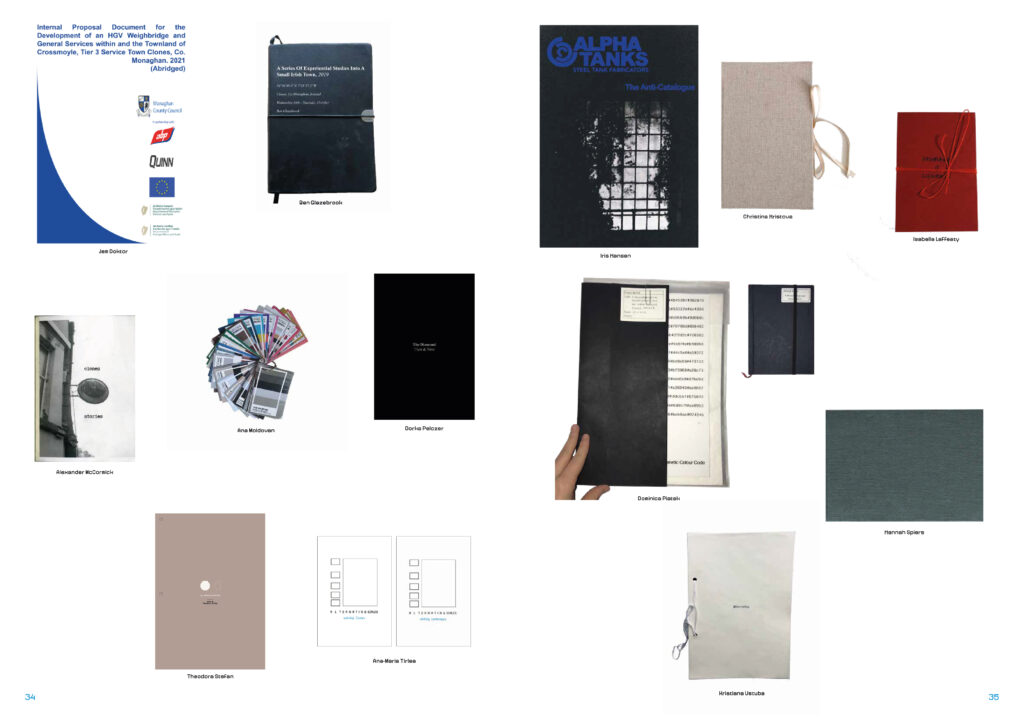
Through the format of these small publications, we investigated various aspect of Clones, from cultural and historical heritage to social and economic dynamics. Some of the themes were:
– Places of story telling-
– Memories of the high street-
– A guide to a walking tour-
– An alternative development plan-
– An anti-catalogue for a factory-
– A swatch book investigating the local and cultural meanings of colors-
– A play where the buildings become the protagonists-
05. Reflections
